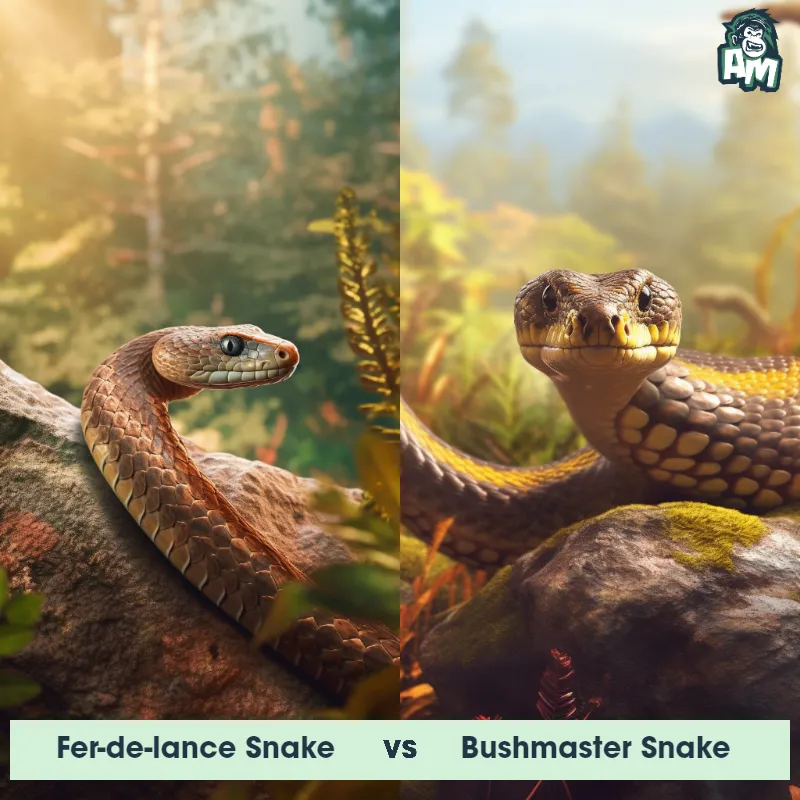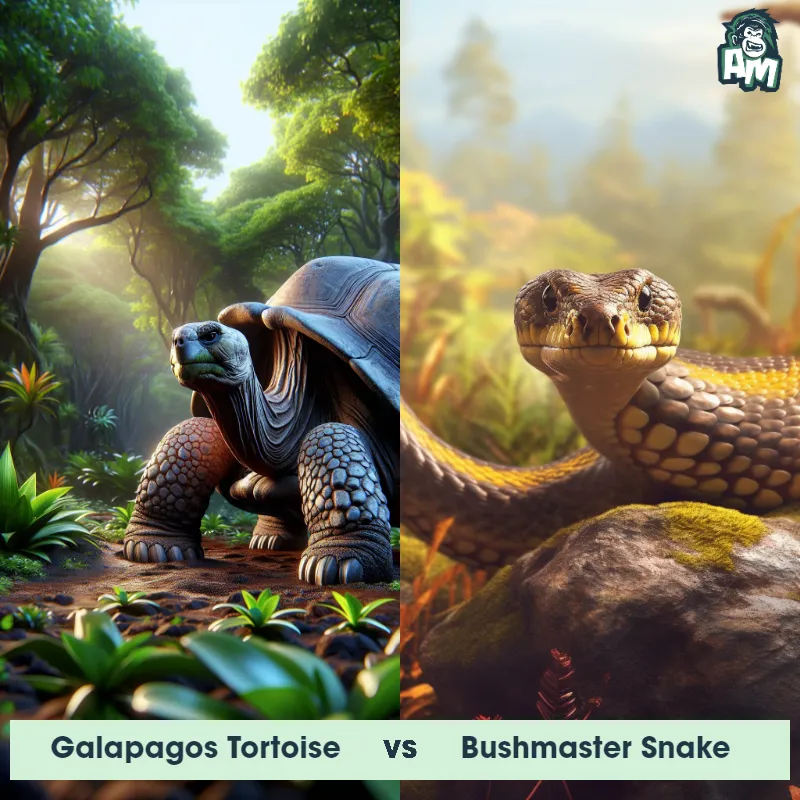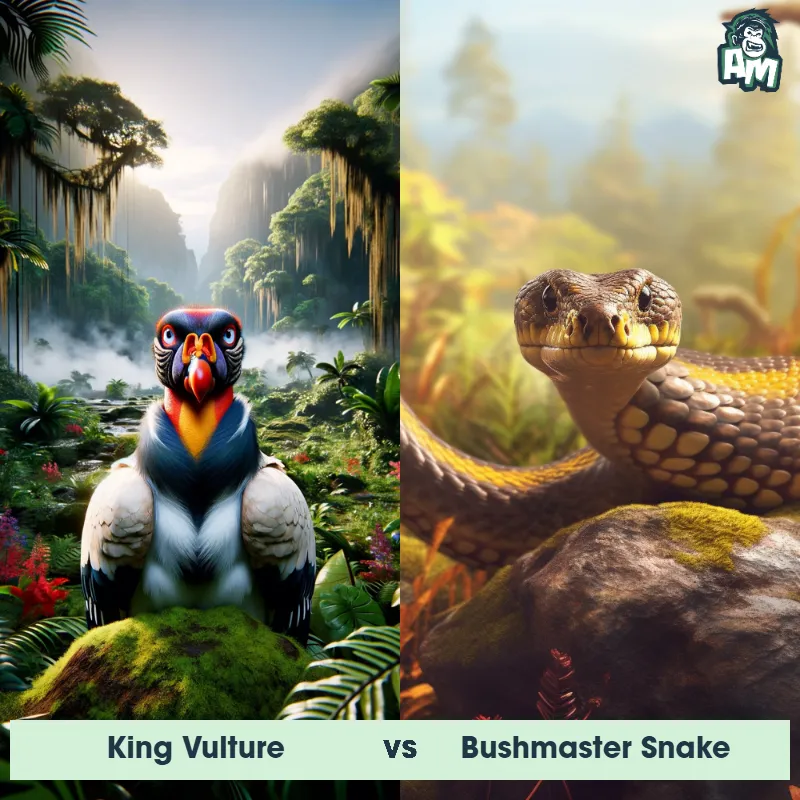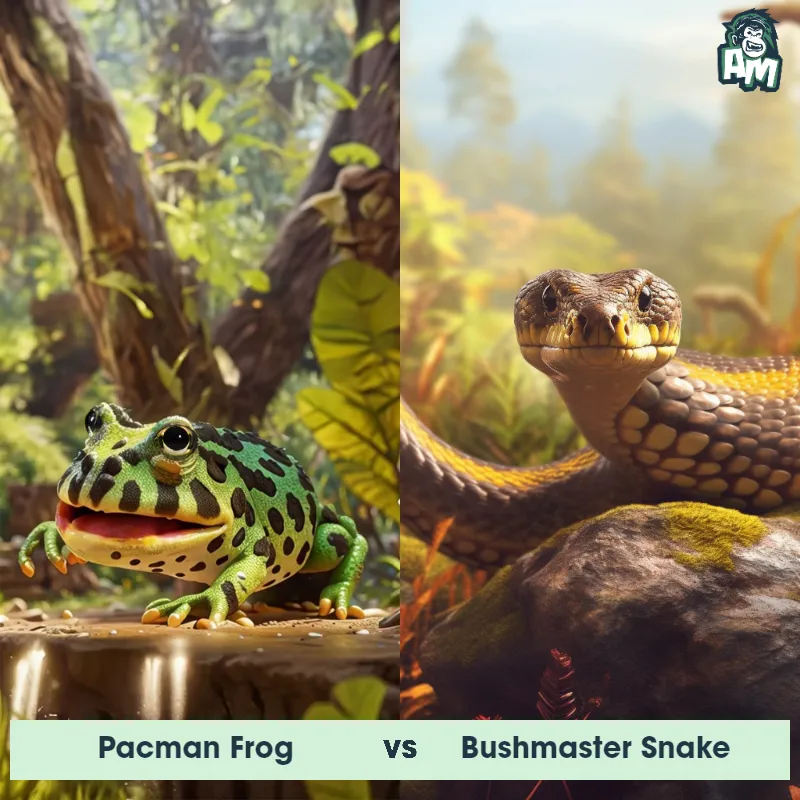The Bushmaster Snake
The Bushmaster Snake, also known as the Lachesis, is a venomous snake species belonging to the pit viper family. It is one of the longest venomous snakes in the world, reaching an average length of 8-12 feet. Its body is thick and muscular, with a triangular-shaped head and large fangs. The Bushmaster's coloration varies from light brown to dark black, with a distinctive pattern of irregular saddles or bands along its body. It inhabits the tropical rainforests of Central and South America, and is known for its secretive and nocturnal nature.
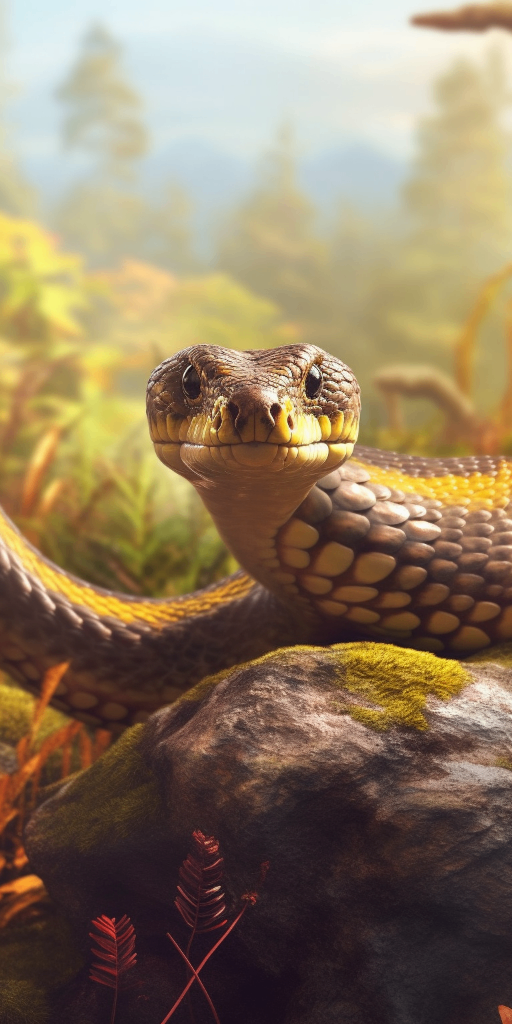
| Bushmaster Snake | |
|---|---|
| Size | Up to 12 feet (3.7 meters) |
| Weight | Up to 15 pounds (6.8 kilograms) |
| Speed | Speed: 10 mph (16 km/hr) |
| Key Strength | Venomous bite |
| Biggest Weakness | Slow movement |
| Scientific Name | Lachesis muta |
| Family | Viperidae |
| Habitat | Forests |
| Geography | Central and South America |
| Diet | Small mammals, birds, and reptiles |
| Lifespan | 10 years - 20 years |

The Bushmaster Snake
The Bushmaster Snake, also known as the Lachesis, is a venomous snake species belonging to the pit viper family. It is one of the longest venomous snakes in the world, reaching an average length of 8-12 feet. Its body is thick and muscular, with a triangular-shaped head and large fangs. The Bushmaster's coloration varies from light brown to dark black, with a distinctive pattern of irregular saddles or bands along its body. It inhabits the tropical rainforests of Central and South America, and is known for its secretive and nocturnal nature.
Fun Fact: The Bushmaster Snake possesses the longest fangs of any venomous snake, reaching up to 2 inches in length, allowing it to deliver a deep bite with a large venom yield.
| Bushmaster Snake | |
|---|---|
| Size | Up to 12 feet (3.7 meters) |
| Weight | Up to 15 pounds (6.8 kilograms) |
| Speed | Speed: 10 mph (16 km/hr) |
| Key Strength | Venomous bite |
| Biggest Weakness | Slow movement |
| Scientific Name | Lachesis muta |
| Family | Viperidae |
| Habitat | Forests |
| Geography | Central and South America |
| Diet | Small mammals, birds, and reptiles |
| Lifespan | 10 years - 20 years |
Bushmaster Snake Matchups
We use AI to simulate matchups between the Bushmaster Snake and other animals. Our simulation considers size, strength, and natural predatory behaviors to determine the most likely outcome.
Bushmaster Snake: Diet, Predators, Aggression, and Defensive Behaviors
What do Bushmaster Snakes eat?
Bushmaster Snakes are carnivorous and primarily feed on small mammals such as rodents, birds, and even other snakes. They are ambush predators, patiently waiting for their prey to pass by before striking with their highly toxic venom to incapacitate the victim.
Do Bushmaster Snakes have any predators?
As adults, Bushmaster Snakes are apex predators in their habitat and have few natural predators due to their large size and potent venom. However, younger Bushmasters may fall prey to larger snakes, birds of prey, and mammals such as jaguars and ocelots.
Are Bushmaster Snakes aggressive?
Bushmaster Snakes are generally solitary and non-aggressive towards humans unless provoked or threatened. They will typically try to avoid conflict but will defend themselves if necessary.
Do Bushmaster Snakes engage in fights?
Bushmaster Snakes are known to exhibit territorial behavior and may engage in combat with other individuals, especially during the mating season. These fights involve wrestling, twisting, and attempting to pin down their opponent.
How do Bushmaster Snakes defend themselves?
Bushmaster Snakes rely on their camouflage and stealth to avoid detection from predators. If threatened, they will first try to intimidate the intruder by hissing loudly and adopting a defensive posture. If that fails, they will not hesitate to strike with their long fangs and deliver a potentially lethal dose of venom.
What is Bushmaster Snakes' biggest weakness in a fight?
Despite their impressive size, strength, and venomous bite, Bushmaster Snakes have a relatively slow strike and movement compared to some other snake species. This could be a weakness in a fight against faster and more agile predators or competitors. Additionally, their reliance on camouflaging themselves means they can be vulnerable if their position is compromised.
Fun Fact: Despite being incredibly venomous, the Bushmaster Snake is generally non-aggressive and prefers to retreat rather than confront humans or potential threats.
Fun Fact: The venom of the Bushmaster Snake is extremely potent and is capable of causing severe tissue damage and other life-threatening symptoms, but it is also being studied for its potential medicinal properties, particularly in the treatment of certain heart conditions.



